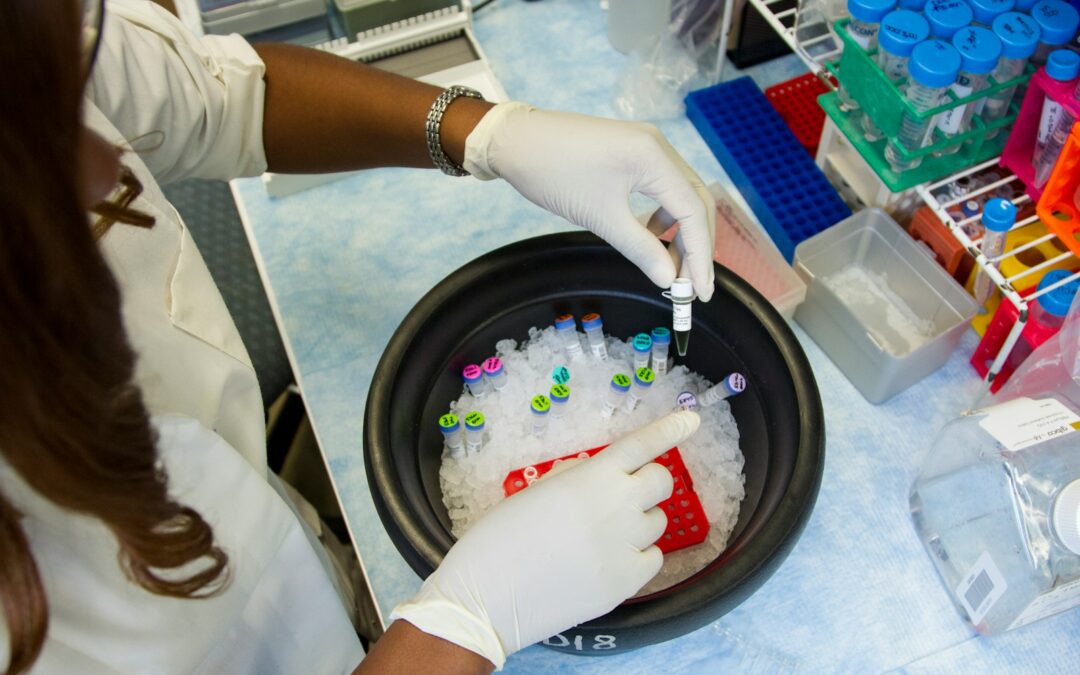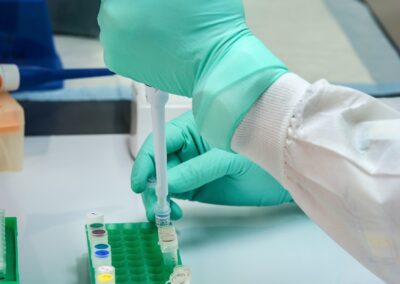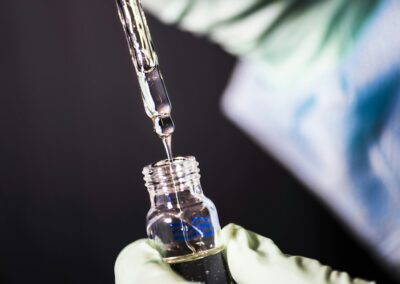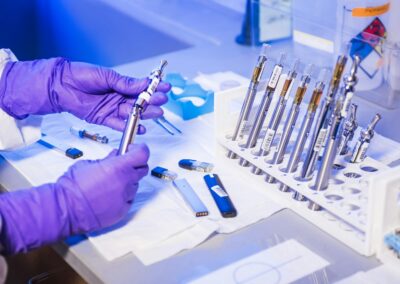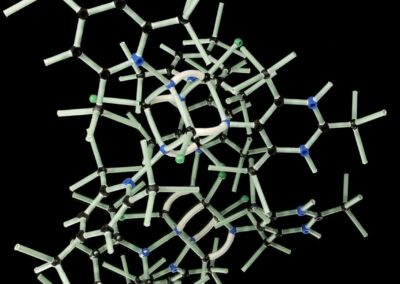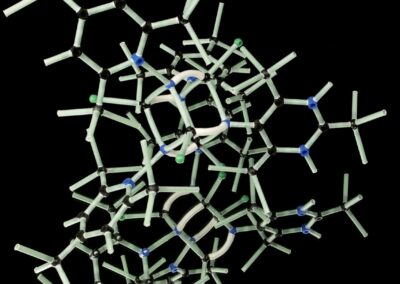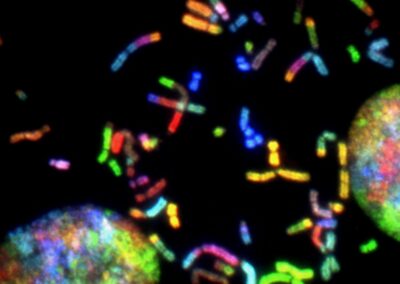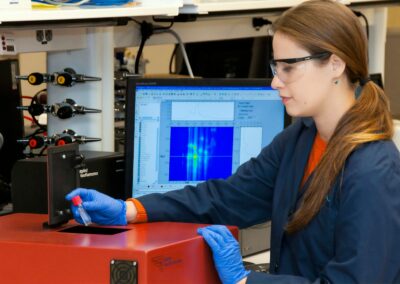Navigating the Complexities of Genetic Augmentation
Introduction to Genetic Augmentation
The field of genetic augmentation has seen tremendous advancements in recent years, promising unprecedented possibilities in medicine. Genetic augmentation involves altering the genetic material of an organism to achieve desired traits or eliminate genetic disorders. While this technology holds immense potential for eradicating diseases and enhancing human capabilities, it also brings significant risks that must be carefully managed.
In Saudi Arabia, the UAE, and cities like Riyadh and Dubai, where technological innovation is rapidly embraced, the ethical and medical implications of genetic augmentation are particularly pertinent. As we delve into the complexities of this technology, it is crucial to understand both its potential benefits and associated risks.
The primary concern with genetic augmentation in medicine revolves around the unknown long-term effects and the potential for unintended consequences. Altering genetic material can lead to off-target effects, where unintended genes are modified, causing unforeseen health issues. Additionally, the ethical implications of genetic modifications, such as designer babies and genetic inequality, pose significant challenges.
Medical Risks of Genetic Augmentation
One of the most pressing risks associated with genetic augmentation is the potential for unforeseen genetic mutations. These mutations can arise from off-target effects during the gene-editing process, leading to unintended health problems that may not manifest until years later. This unpredictability underscores the need for rigorous testing and long-term studies to ensure the safety of genetic modifications.
Another critical risk is the potential for immune responses. Introducing modified genes into the human body can trigger immune reactions, leading to inflammation, organ rejection, or other adverse effects. This risk is particularly concerning in therapeutic applications, where the goal is to treat genetic disorders without causing additional health issues.
Moreover, there is a risk of genetic augmentation leading to the creation of new diseases. By altering the genetic makeup of an organism, we may inadvertently create new pathogens or make existing ones more virulent. This highlights the importance of stringent biosecurity measures and robust regulatory frameworks to mitigate such risks.
Managing the Risks: Ethical and Regulatory Considerations
Effective management of the risks associated with genetic augmentation requires a multifaceted approach, integrating ethical considerations, robust regulatory frameworks, and comprehensive risk assessment protocols. In regions like the UAE and Saudi Arabia, where cultural and religious values play a significant role in shaping societal norms, ethical considerations must be at the forefront of genetic research and applications.
Ethical oversight is essential to ensure that genetic augmentation is conducted responsibly. This involves establishing ethical review boards to evaluate the potential risks and benefits of genetic modifications, as well as ensuring informed consent from patients. Public engagement and education are also crucial in fostering an informed and ethically aware society.
Regulatory frameworks must be developed and enforced to oversee the application of genetic augmentation technologies. These frameworks should include guidelines for preclinical and clinical testing, monitoring for long-term effects, and mechanisms for addressing any adverse outcomes. International collaboration can also play a vital role in harmonizing regulatory standards and sharing best practices.
Strategies for Minimizing Risks in Genetic Augmentation
Advances in Technology and Research
Technological advancements are key to minimizing the risks associated with genetic augmentation. Precision gene-editing tools, such as CRISPR-Cas9, have revolutionized the field by enabling more accurate and targeted modifications. However, ongoing research is essential to further refine these tools and reduce off-target effects.
Investing in advanced technologies and fostering collaboration between research institutions in Saudi Arabia, the UAE, and globally can drive innovation and improve the safety and efficacy of genetic augmentation. By leveraging cutting-edge research, we can develop safer methodologies and better understand the long-term implications of genetic modifications.
Furthermore, integrating artificial intelligence (AI) and machine learning into genetic research can enhance our ability to predict and mitigate risks. AI algorithms can analyze vast datasets to identify potential off-target effects and optimize gene-editing protocols. This approach can significantly improve the precision and safety of genetic augmentation.
Comprehensive Risk Assessment and Monitoring
Comprehensive risk assessment is crucial in managing the potential risks of genetic augmentation. This involves conducting thorough preclinical studies to evaluate the safety and efficacy of genetic modifications before they are applied in clinical settings. Long-term monitoring of patients who undergo genetic augmentation is also essential to identify any delayed adverse effects.
In addition to scientific assessments, incorporating input from ethicists, sociologists, and the public can provide a holistic understanding of the risks and benefits. This multidisciplinary approach ensures that the societal implications of genetic augmentation are considered alongside the scientific and medical aspects.
Implementing robust monitoring systems can help track the outcomes of genetic augmentation and address any issues that arise. This includes establishing registries for patients who undergo genetic modifications and conducting regular follow-up assessments. By maintaining a comprehensive database of genetic augmentation outcomes, researchers and policymakers can continuously improve safety protocols.
Collaborative Efforts and International Standards
Collaboration among countries, research institutions, and regulatory bodies is essential in managing the risks associated with genetic augmentation. By sharing knowledge, resources, and best practices, we can develop global standards that ensure the responsible use of genetic technologies. This collaborative approach can also facilitate the rapid dissemination of new findings and innovations.
In the context of Saudi Arabia, the UAE, Riyadh, and Dubai, regional cooperation can drive advancements in genetic augmentation while respecting cultural and ethical values. Establishing centers of excellence and fostering partnerships with international institutions can position these regions at the forefront of genetic research and innovation.
International organizations, such as the World Health Organization (WHO) and the International Society for Stem Cell Research (ISSCR), play a crucial role in setting guidelines and promoting ethical practices in genetic augmentation. Adhering to these guidelines and participating in global initiatives can enhance the credibility and safety of genetic research.
Conclusion
The potential of genetic augmentation in medicine is vast, offering new hope for treating genetic disorders and enhancing human capabilities. However, the associated risks must be carefully managed through a combination of technological innovation, ethical oversight, and robust regulatory frameworks.
In regions like Saudi Arabia and the UAE, where cultural and religious values shape societal norms, it is crucial to integrate these values into the ethical and regulatory considerations of genetic augmentation. By adopting a multidisciplinary approach and fostering international collaboration, we can navigate the complexities of genetic augmentation and ensure its responsible and beneficial use.
As we move forward, the key to harnessing the potential of genetic augmentation lies in balancing innovation with ethical responsibility. By prioritizing safety, transparency, and public engagement, we can unlock the transformative power of genetic technologies while safeguarding human health and societal well-being.
#GeneticAugmentation #MedicalRisks #Biotechnology #GeneticEngineering #RiskManagement #HealthTechnology #AIinGenetics #SaudiArabia #UAE #Riyadh #Dubai #ArtificialIntelligence #Blockchain #ExecutiveCoaching #GenerativeAI #ModernTechnology #BusinessSuccess #LeadershipSkills #ManagementSkills #ProjectManagement

